To Those Who Provide Support to Parents Who Are Abuse Survivors
Article on difficulties of being a parent when you're also an adult survivor of child abuse.
I want to first share with you how very appreciative I am of you. How important you are. Not only to the parents and children with whom you work, but also to those generations not yet born. Your life becomes a powerful message, and each time it touches a parent, it reaches farther into the future than you can imagine.
I've been asked to speak to you today about assisting parents who are also abuse survivors. This is clearly no simple task. There's so very much to consider, so much to think about, and far more that you need to do. Where do we begin?
Let me share a bit about who I see these people with whom you work to be. Survivors are, in general, from my perspective truly amazing people. They've been wounded and battered and yet have come to possess enormous strengths. Please never, for a moment, fail to recognize these strengths or forget the degree to which they have suffered. How painful it is to be haunted -- haunted by betrayal, abandonment, deprivation, abuse, depression, anxiety, low-self esteem, and so much more. They want your respect and need your compassion if there is any hope that you might eventually earn their trust -a trust that is often hard won and sacred.
Parenting offers tremendous gifts to survivors, providing them with opportunities to heal old wounds as they develop a loving relationship with their children. It is also often an enormous challenge. To parent effectively is difficult for those of us who receive significant support and were blessed with positive role models. To do so without these benefits can very often feel overwhelming.
J. Patrick Gannon in Soul Survivors: A New Beginning For Adults Abused as Children wrote: "Parenting for the Survivor before or during recovery is like facing a fork in the road: at major junctures you will need to take a different road from your parents in the manner you raise your child." Anyone who's faced a new road can appreciate how easy it is to get lost along the way. Your job in part becomes that of a tour guide, pointing out the areas that require caution, making recommendations, and providing general assistance and support. Before a guide can be effective in facilitating the journey, he or she must be very clear regarding the destination. When providing guidance to parents, it's very helpful to have an understanding of where the parent wants to go. How would the parent like to be different from his or her own parents? What is he or she afraid of repeating? Where are the places that the parent gets triggered into falling into unhealthy patterns with his or her children? How does the parent know that he or she needs support, direction, or a break from the demands of parenting? What are the parents dreams for his or her children? What kind of parent does the survivor of child abuse want to be? What is his or her vision of being a good parent? Who are his or her role models? What unresolved issues will be raised for the survivor during the course of parenting? How will the parent know he or she has been triggered? What will the abuse survivor do, and whom can he or she turn to for assistance when these issues arise?
continue story below
Gannon points out that child abuse on one level is about the abuse of power, and cautions that if a parent hasn't worked out their own feelings regarding the power imbalance they suffered as children, they risk these issues resurfacing in their relationships with their own children. Parents, counsels Gannon, must possess greater power than their children in order to effectively guide and protect them, however it's also important that children maintain some age-appropriate control in order to effectively learn how to live in the world.
Survivors very often struggle with sharing power with their children and tend to respond by gravitating towards one extreme or the other. They either assume too little control and responsibility, or become over controlling. Survivors who were neglected as children may in their attempts to offer more protection and guidance than they themselves had, exert far more control than is healthy for their children. On the other hand, those survivors who were dominated by their parents may overcompensate by abdicating control and responsibility. It can be helpful for parents to ask themselves when working on issues of power and control, "Do I find myself telling my child what to think and how to feel?" "Do I allow my child to make choices?" "Do I expect my child to behave like I would under the same circumstances?" "Do I avoid making family decisions or providing discipline because I'm afraid that I'll make a mistake, become too much like my own parents, or lose the love of my child?" "Do I allow others to make decisions regarding my child that I should be making?" When assisting parents in working on these issues, I often gently point out that sometimes we do the wrong thing for the right reason.
It's very common for an adult survivor of child abuse to become triggered when his or her child does something that the survivor wasn't allowed to do as a child. The survivor, who spent years of feeling helpless, now finally has the power to fight back and often does. Unfortunately it's easy to lose sight of the fact during these times that the anger and indignation that's been activated in the parent should never be directed at the child. While the anger that the survivor feels isn't wrong or unjustified when it gets triggered, it's critical that the parent learns how to effectively deal with these feelings by directing them away from his or her children, not at them.
Gannon offers the following suggestions to parents regarding how to effectively deal with anger.
- Become aware of the body signals that indicate that you 're becoming angry.
- When you experience these signals occurring, take a time out by placing your child in a safe place until you cool down, or request that a responsible adult take over if one is available until you're feeling calmer.
- Attempt to understand why you've become so angry. What has your child's behavior triggered in you?
- Reach out to a support person, share what you're feeling and explore what it is that's been triggered.
- Write in your journal regarding your child's behavior and its connection to the buttons that have been pushed by the behavior. You might want to ask yourself in the journal, "Do I feel more like my parent or myself when dealing with my child when I'm angry?" "What situations push my buttons?" "What is my own inner child feeling during these times? "If the ghost of my parent begins talking though me during these times, what is the ghost saying? That my child has no right to express certain feelings? That my child has no right to make a certain request? That parents should never ever be questioned? That my child doesn't love me?
- Engage in behavior that will help you to constructively discharge your feelings. You might chose to write in your journal, exercise, make a phone call, scrub walls, etc.
I would also add that parents who learn relaxation techniques such as progressive muscle relaxation and deep breathing become far more able to control their anger than those who have not.
For many adult abuse survivors, particularly those who grew up in families that lacked appropriate boundaries, physical and emotional closeness can be confusing and even frightening. It's not easy to establish proper boundaries as a parent when you didn't experience them as a child. It's often necessary for those who work with survivors of child abuse on parenting issues to provide guidance in helping the parent to learn such distinctions as, what's appropriate to share with a child and what's not; when the needs of the parents should supersede the wants of the child; when does physical affection become sexual arousal; when does discipline become abuse; and when does parental authority become over control.
Many adult survivors tend to underestimate their strengths in regards to parenting. It's important that you help them identify and build upon their skills and abilities. Just as you hope to teach parents how to best nurture and care for their offspring, the parents with whom you work need your encouragement and support. It's been said that the best teaching comes from example- by providing parents with positive feedback when ever possible, you not only encourage them to continue doing what works, you also model an important skill that children so desperately need from their parents. In honoring the parent, it can be possible to assist the parent in honoring his or her own child.
I've left a tremendous amount unsaid. I'm sure that this comes as no surprise. How does one capture the tremendous amount of knowledge and skill required in meeting the needs of the adult survivor of child abuse who parents? Just as parenting is an ongoing process, so is learning how to best teach effective parenting an ongoing journey. To some degree, that's perhaps part of the beauty of your job - there never ceases to be opportunities for growth. Bless you on your journey....
next: Until We Meet Again
APA Reference
Staff, H.
(2009, January 8). To Those Who Provide Support to Parents Who Are Abuse Survivors, HealthyPlace. Retrieved
on 2026, January 13 from https://www.healthyplace.com/alternative-mental-health/sageplace/to-those-who-provide-support-to-parents-who-are-abuse-survivors
 A recent study reported in Drugs and Therapy Perspectives reports that about one percent of women in the United States have binge eating disorder, as do thirty percent of women who seek treatment to lose weight. In other studies, up to two percent, or one to two million adults in the U.S., have problems with binge eating.
A recent study reported in Drugs and Therapy Perspectives reports that about one percent of women in the United States have binge eating disorder, as do thirty percent of women who seek treatment to lose weight. In other studies, up to two percent, or one to two million adults in the U.S., have problems with binge eating. Teachers are trained to handle students who lack discipline, the slow learners, the extremely bright, and even kids faced with ADHD. What I've discovered, though, is that they aren't prepared to teach the students suffering from depression. Just like anyone else, teachers are very perceptive when it comes to identifying disturbed, possibly depressed students in their class, yet they often seem incapable of and uninterested in helping that student.
Teachers are trained to handle students who lack discipline, the slow learners, the extremely bright, and even kids faced with ADHD. What I've discovered, though, is that they aren't prepared to teach the students suffering from depression. Just like anyone else, teachers are very perceptive when it comes to identifying disturbed, possibly depressed students in their class, yet they often seem incapable of and uninterested in helping that student.


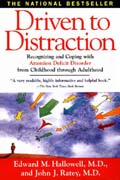

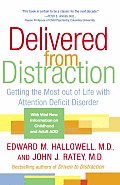
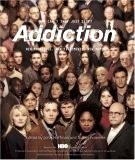
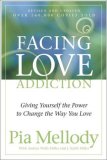
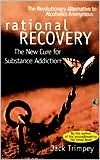
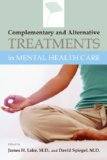

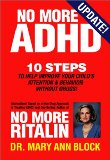




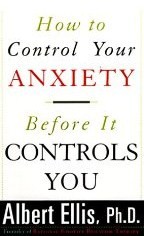
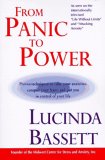

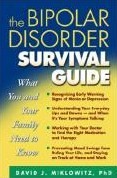







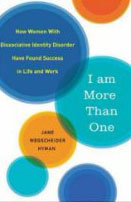
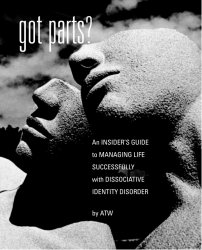



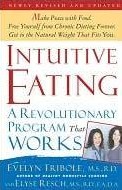



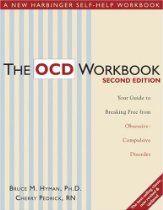
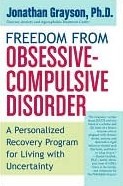

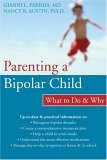
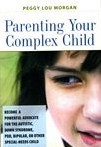
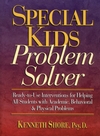
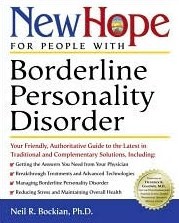
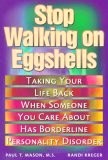
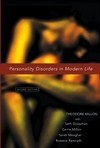
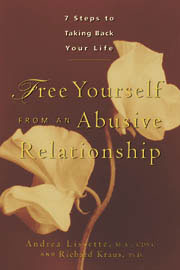

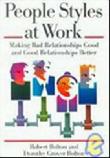

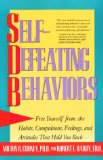
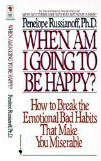
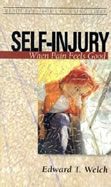

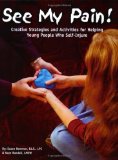









 While studying the genetics of affective disorders, Dr. Dean F. MacKinnon has been working with families in which several members have bipolar disorder. Recent analysis of data from a large epidemiological study of the 1980s showed that 20 percent of families affected by bipolar disorder (but only 1 to 2 percent of families in the general population) are also affected by panic disorder. In other words, panic disorder clusters in families affected by bipolar disorder. Dr. MacKinnon is exploring the likely existence of a genetic subtype--perhaps a distinct form of bipolar disorder--that is responsible for the combined disorder (bipolar disorder plus panic disorder). The work may assist researchers in other studies of the genetic transmission of bipolar disorder.
While studying the genetics of affective disorders, Dr. Dean F. MacKinnon has been working with families in which several members have bipolar disorder. Recent analysis of data from a large epidemiological study of the 1980s showed that 20 percent of families affected by bipolar disorder (but only 1 to 2 percent of families in the general population) are also affected by panic disorder. In other words, panic disorder clusters in families affected by bipolar disorder. Dr. MacKinnon is exploring the likely existence of a genetic subtype--perhaps a distinct form of bipolar disorder--that is responsible for the combined disorder (bipolar disorder plus panic disorder). The work may assist researchers in other studies of the genetic transmission of bipolar disorder.